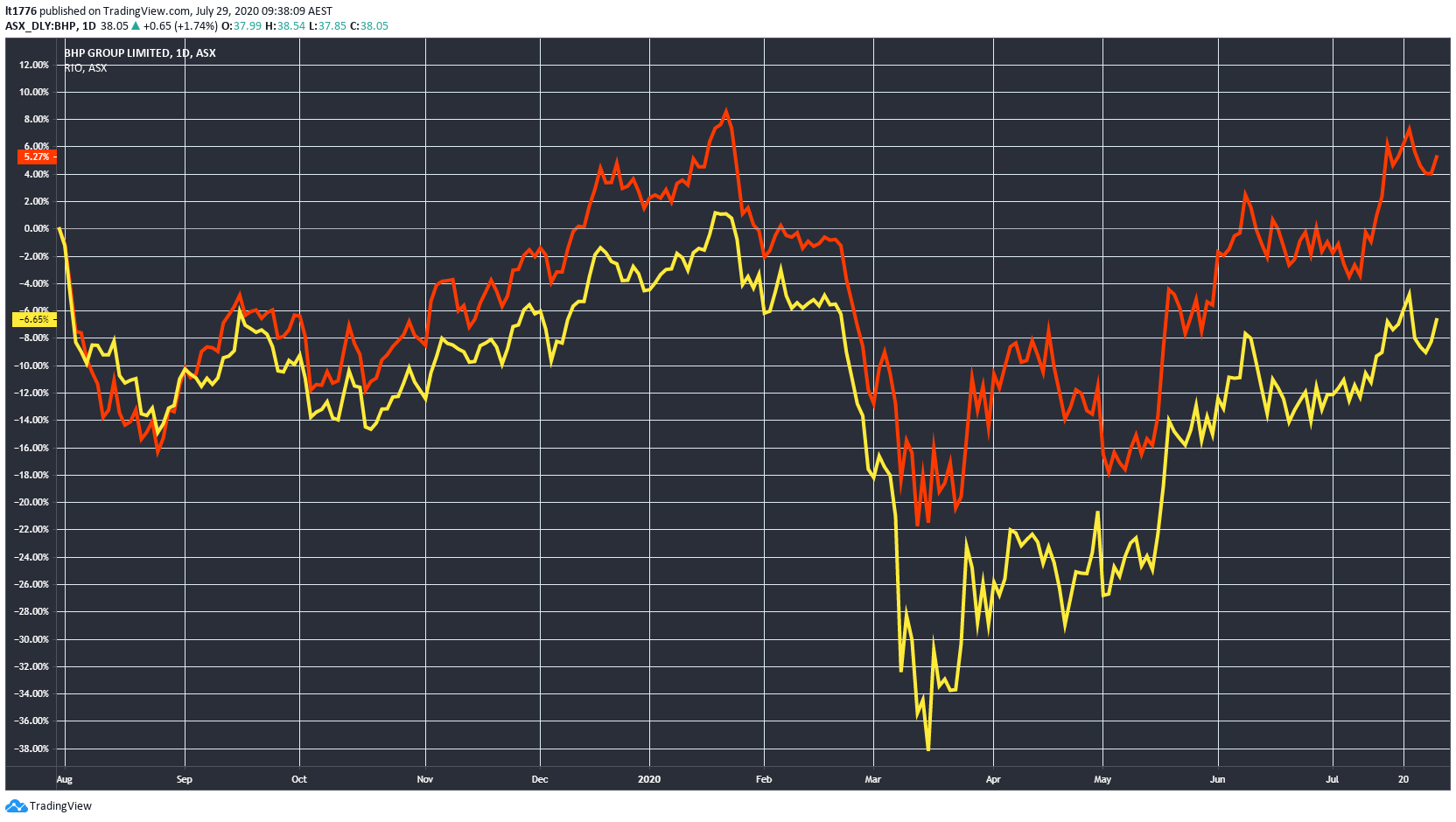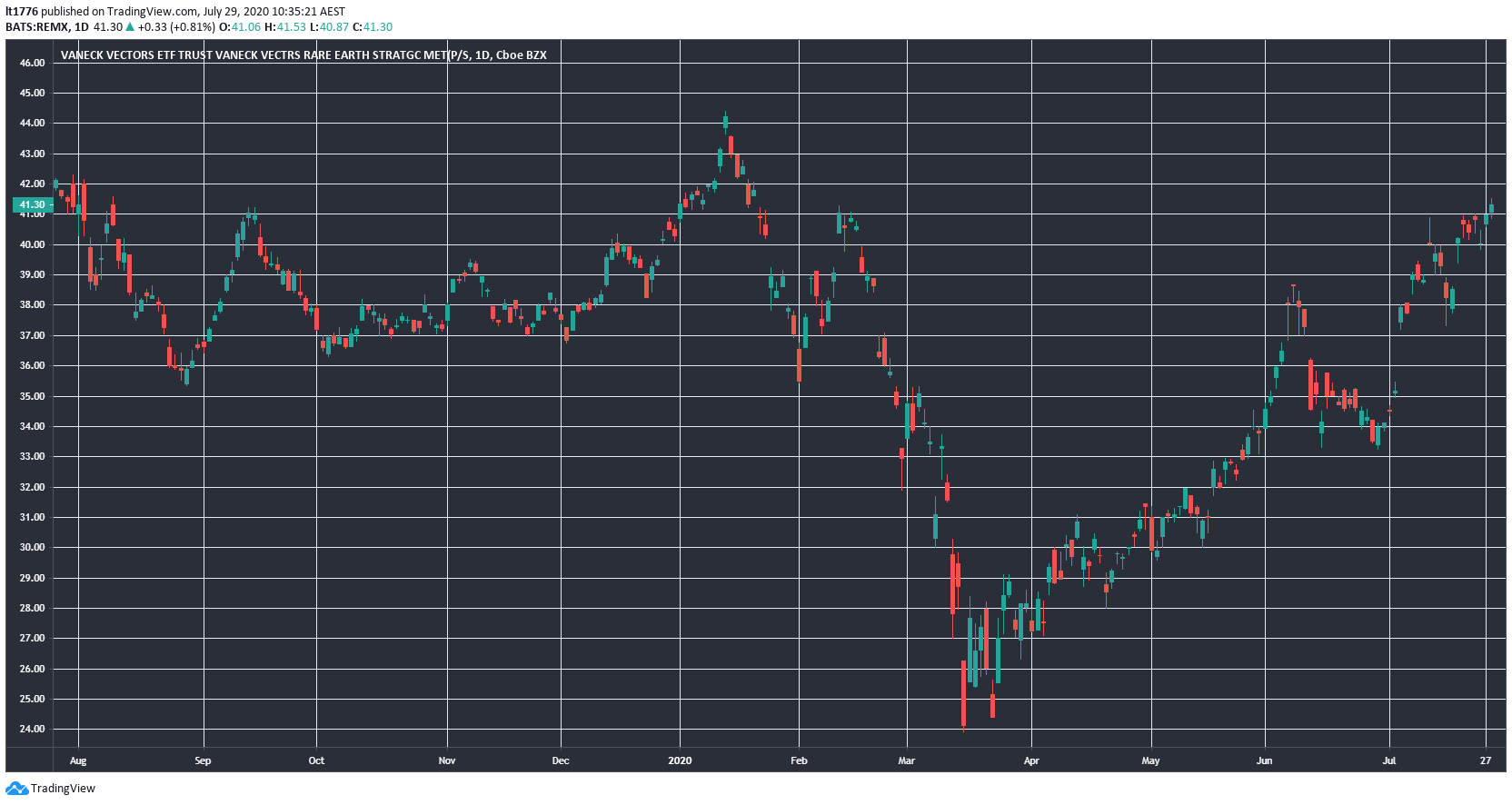The immediate risk is clear — China.
Today, I’m talking about the largest miners in Australia and give you a special tool you could use to play what I call a ‘fractured’ market.
This includes BHP Group Ltd [ASX:BHP], Rio Tinto Ltd [ASX:RIO], and Fortescue Metals Group Ltd [ASX:FMG].
Now, this morning I just got off the phone with one of my colleagues who works in the superannuation industry.
He’s very clued up about the subtle shifts going on beneath the surface, and this is what he said on China:
‘They don’t see it as a big risk is the general vibe.
‘They need each other too much.’
I think on China, this could be a very complacent outlook.
Now, the FMG share price is hitting all-time highs, while the RIO share price (orange line) is actually outperforming the BHP share price (yellow line) — which you can see below:
|
|
| Source: tradingview.com |
First though…
You’ve heard this before, but it’s very important
Recent Money Morning pieces have focused on the risks emanating from China.
You can read about a recent run on regional banks here.
A breakdown of which sectors could be the winners (and losers).
And a piece which profiles how tech manufacturing could be the way forward for Australia.
The overarching theme is that the relationship is on the brink.
Now, I don’t think the Chinese will be able to immediately pivot their iron ore supply chain to Brazil.
Cases are still out of control there, and the physical distance between the two countries means they may have to stick with Australia for now.
But should you see Vale SA [NYSE:VALE] production numbers creep up, in concert with any further escalations in the South China Sea — it might be time to reconsider positions in the trio of companies mentioned before.
You can find a special report on exactly what triggered the current breakdown in the Australia–China relationship right here.
One ETF to keep your eye on
This from the AFR:
‘Australia has increasingly sought to unite with smaller countries in the region to counter China, while tightening its relations with Washington. It joined the U.S. last week in rejecting China’s expansive maritime claims in the South China Sea, calling them “inconsistent” with the 1982 United Nations Convention on the Law of the Sea.
‘After meetings on Tuesday in Washington, the two sides issued a statement saying they “recognized an interest in strengthening the mutual security and prosperity of the United States and Australia.” They vowed to collaborate on issues including next-generation hypersonic weapons, integrated air and missile defense, electronic and undersea warfare, space, cybersecurity and critical minerals.’
The last two words of this quote are particularly intriguing.
Just recently one of our editors who runs the excellent Pivot Trader service said he spotted a buy signal on the VanEck Vectors® Rare Earth/Strategic Metals ETF [NYSE:REMX].
You can see the chart below:
|
|
| Source: tradingview.com |
I think this could be a key leading indicator of where the US-China-Australia relationship is heading.
If you start to see a big move taking place, the threat to the three big miners could be real.
Here’s a great way to capitalise on the mini-booms we are seeing
So, what does this all mean?
I think the main takeaway from the China–Australia relationship breakdown is that we are now about to enter a fractured world.
That is, we could have a range of ‘mini-booms’ on the cards.
This could be clean energy, uranium, certain specific commodities (not iron ore), as well as technology.
Small-caps are where the action on these booms will show up first.
And how do you go about spotting the money flow towards these small-caps?
You can find out exactly how to do that right here.
It’s a proprietary indicator that my good friend Ryan Dinse has developed.
I highly recommend you learn more.
Regards,
 |
Lachlann Tierney,
For Money Morning
Lachlann is also the Junior Analyst at Exponential Stock Investor, a stock tipping newsletter that hunts for promising small-cap stocks. For information on how to subscribe and see what Lachy’s telling subscribers right now, please click here.




Comments